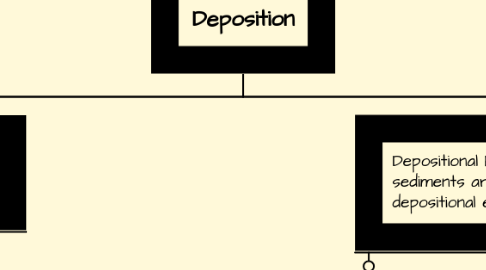Deposition
by Nicholas Huffman


1. Depositional Landforms: The landforms depend on the amount of energy of water and wind in the Depositional enviroment. The energy determines the size amount of the sediment moved. (High Energy=Large sediments transported) (Low Energy=small sediments transported
1.1. Example: Crashing waves produce a high energy, producing sand easily
1.2. Landforms by deposition are often flat and low-lying
2. Deposition Agents: Water, Wind, Glaciers, and Gravity
2.1. Water Deposition: Water deposition occurs when the water is slow
2.1.1. Loss of speed= reduces the amount of energy the water has to carry
2.1.2. Most sediments are deposited in Delta's which are large deposits of sediments that forms where a stream enters a large body of water. Can also deposit sediments on the inside of curves of menders
2.2. Wind Deposition: There are two types of wind depositions which are Dune which is a pile of windblown sand, and Loess which is a crumbly, windblown deposit of silt and clay
2.2.1. Dune from wind loses energy and drops sand
2.2.2. Loess can form from rock that was ground up and deposited by glaciers
2.3. Mas Wasting (Gravity) Deposition: This occurs only when gravity is greater than other forces holding the rock
2.3.1. Talus is a pile of angular rocks and sediement from a rockfall
2.4. Glacial Deposition this tends to be very slow because they have to melt which is in lower altitudes or climates, but the sediments that had been once frozen are now deposited
2.4.1. Till is a mixture of various sizes of sediment deposited by a glacier
2.4.2. Till is poorly sorted and can range in many sizes from boulders to the size of and and silt
3. Depositional Environments: This is when the sediments are deposited and this is where a depositional environment would be
3.1. These places are on land along coasts, or in oceans
3.1.1. Coastal deposition include include swamps, deltas, beaches, and dunes.

